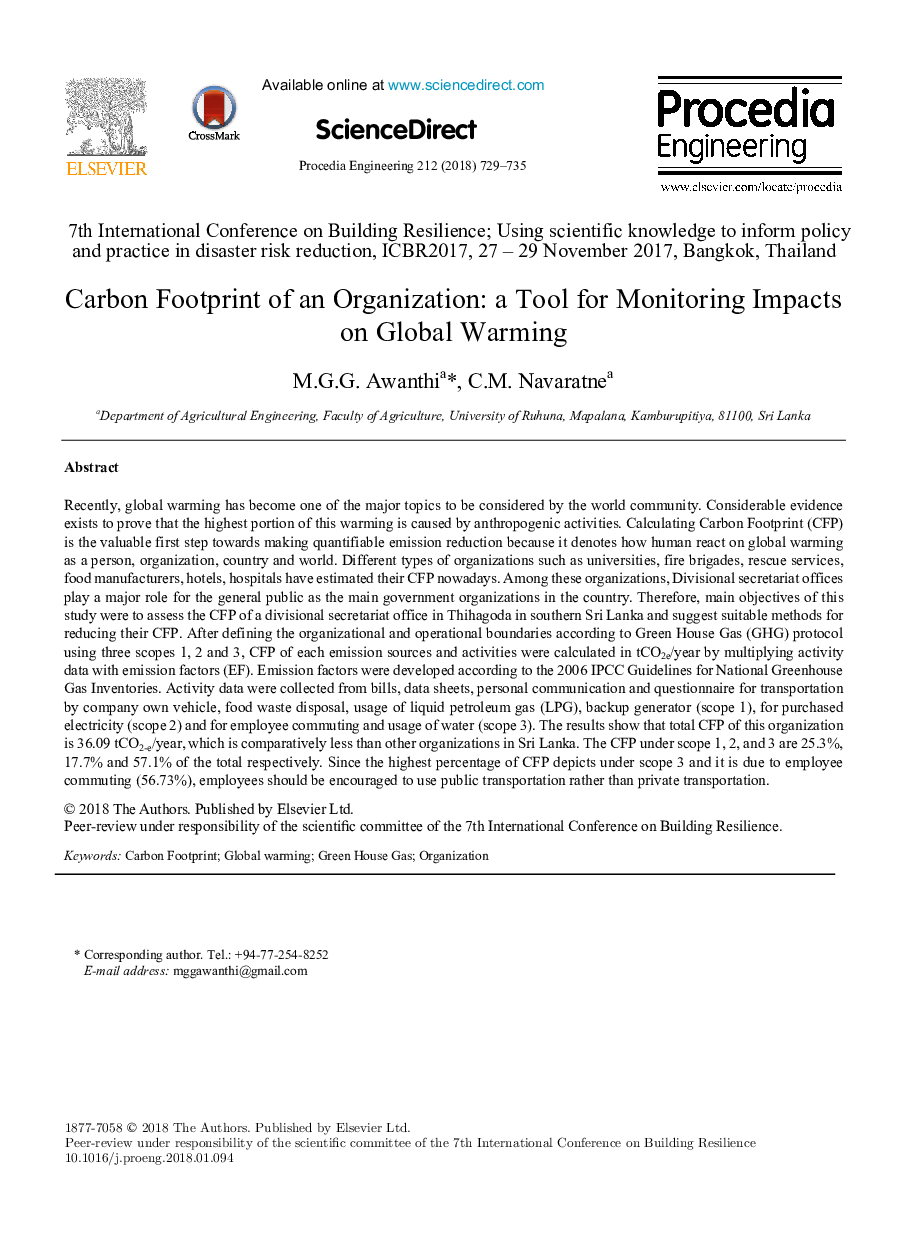| کد مقاله | کد نشریه | سال انتشار | مقاله انگلیسی | نسخه تمام متن |
|---|---|---|---|---|
| 7226138 | 1470611 | 2018 | 7 صفحه PDF | دانلود رایگان |
عنوان انگلیسی مقاله ISI
Carbon Footprint of an Organization: a Tool for Monitoring Impacts on Global Warming
ترجمه فارسی عنوان
رد کربن یک سازمان: ابزار برای نظارت بر تأثیرات بر گرم شدن جهانی
دانلود مقاله + سفارش ترجمه
دانلود مقاله ISI انگلیسی
رایگان برای ایرانیان
کلمات کلیدی
رد پای کربن، گرمایش جهانی، گاز گلخانه ای، سازمان،
موضوعات مرتبط
مهندسی و علوم پایه
سایر رشته های مهندسی
مهندسی (عمومی)
چکیده انگلیسی
Recently, global warming has become one of the major topics to be considered by the world community. Considerable evidence exists to prove that the highest portion of this warming is caused by anthropogenic activities. Calculating Carbon Footprint (CFP) is the valuable first step towards making quantifiable emission reduction because it denotes how human react on global warming as a person, organization, country and world. Different types of organizations such as universities, fire brigades, rescue services, food manufacturers, hotels, hospitals have estimated their CFP nowadays. Among these organizations, Divisional secretariat offices play a major role for the general public as the main government organizations in the country. Therefore, main objectives of this study were to assess the CFP of a divisional secretariat office in Thihagoda in southern Sri Lanka and suggest suitable methods for reducing their CFP. After defining the organizational and operational boundaries according to Green House Gas (GHG) protocol using three scopes 1, 2 and 3, CFP of each emission sources and activities were calculated in tCO2e/year by multiplying activity data with emission factors (EF). Emission factors were developed according to the 2006 IPCC Guidelines for National Greenhouse Gas Inventories. Activity data were collected from bills, data sheets, personal communication and questionnaire for transportation by company own vehicle, food waste disposal, usage of liquid petroleum gas (LPG), backup generator (scope 1), for purchased electricity (scope 2) and for employee commuting and usage of water (scope 3). The results show that total CFP of this organization is 36.09 tCO2-e/year, which is comparatively less than other organizations in Sri Lanka. The CFP under scope 1, 2, and 3 are 25.3%, 17.7% and 57.1% of the total respectively. Since the highest percentage of CFP depicts under scope 3 and it is due to employee commuting (56.73%), employees should be encouraged to use public transportation rather than private transportation.
ناشر
Database: Elsevier - ScienceDirect (ساینس دایرکت)
Journal: Procedia Engineering - Volume 212, 2018, Pages 729-735
Journal: Procedia Engineering - Volume 212, 2018, Pages 729-735
نویسندگان
M.G.G. Awanthi, C.M. Navaratne,
